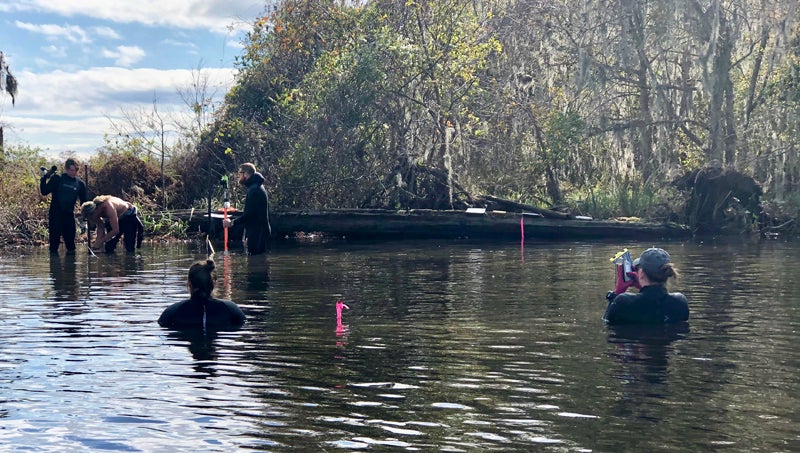ECU research focuses on Washington waterfront archeology
Published 6:05 pm Friday, November 15, 2019

- UNDERWATER SURVEY: A team of researchers from East Carolina University’s Maritime Studies program conducts surveying at a site on the south side of the Pamlico River. The work is part of ECU student Will Nassif’s master’s degree thesis. Nassif will discuss his team’s work during a presentation at the North Carolina Estuarium this week. (Ray Midgett)
Beneath the lapping waves of the Pamlico River, a hidden history tells the story of the shoreline from days gone by — its structures and the lifestyles of the people who called Washington home.
Uncovering and bringing to light that hidden history is the aim of East Carolina University Maritime Studies student Will Nassif, whose master’s degree thesis research is focused on the archeology of three sites in the vicinity of Washington that were once home to thriving industries.
“The way Washington developed historically, it operated as a focal point for trade as that region and the state of North Carolina, all the way from its founding in the late 18th century up to the 20th century when inland transportation became economically more viable,” Nassif said. “… It contributes to the overall understanding of what brought growth to the region.”
Utilizing a combination of historical sources and field research to survey the sites, Nassif is reconstructing what role these sites may have played in the local economy and the overall trade network of the Pamlico River.
The first site is the Fowle Sawmill, which was located on the south side of the river, just east of the N.C. Highway 17 bridge. A second site is also on the south side of the river, slightly further east, and its purpose is somewhat of a mystery. The final site, which was once home to the Eureka Lumber Company, is along the shoreline of the Washington Harbour development on the west side of town, on the Tar River.
All of these sites share a common trait in that they are outside of the typical historical perspective of the Washington waterfront.
“Since two of them are identifiable, I plan on using a lot of historical records to recreate the relationships between those sites and other industries that were in Washington, as well how that played into the wider trade network,” Nassif said.
Although records for the third site are less clear, Nassif says the structure there could have been part of turpentine operations that once existed on the southern shoreline. Other possibilities include a Civil War-era structure relating to the Siege of Washington or possibly a dumping site for ships passing through the area.
Nassif will offer a talk about his research on Thursday as part of the Historic Port of Washington’s quarterly speaker series. The talk will start at 5:30 p.m. at the North Carolina Estuarium. The public is invited, the admission is free but a $5 donation is suggested. Those who do planned to attend should call the Estuarium at 252-948-0000 to reserve a seat.





